You’ve seen them at CostCo, Cabela’s, and other venues…and they are relentlessly promoted on talk radio and podcasts….yes, I’m talking about those buckets that supposedly have ‘delicious, nutritious long-life survival food’. Upon examination and testing they usually come up far short on nutrition, are a bit distant from ‘delicious’, but they usually do nail the long-life part. Then again, a rock is also long life so there’s that.
The biggest problem with these buckets or kits is that they provide a false sense of security. They’re marketed to the people who feel the need to ‘do something’ but just want to whip out their credit card, make an online purchase, and check “food” off their survival checklist. I would wager virtually none of them actually read the labels.
What are some of the problems? Well, in my experience, quite a few:
- Calorie Count
- Lack of meat
- Reliance on soups and stews
- Portions
- Variety
- Sodium
- Price
A few years back, Wise food storage got their cod in the crusher over the calorie count of their bucket of survival food. What they had marketed as a two-week supply was, indeed, a two week supply….if you didnt mind each meal having so few calories that it made POW camp rations look generous.
Succinctly, the amount of calories provided by the food in the bucket did not provide nearly enough of the daily recommended amount of calories for a healthy individual. Couple this with the increased caloric requirements from the stresses involved in whatever disaster you’re experiencing and you wind up on, basically, starvation rations. Say what you will about the USDA ‘recommended daily allowance’ numbers but they at least give us a benchmark to work with. Two thousand calories a day is what they usually recommend and most food bucket kits wind up shorting you on that. So, if you insist on buying one of these turn-key packages, check how many calories per day you’ll get out of it. If it isn’t close to 2000, you might want to explore other options.
One thing you’ll notice very quickly is that most of the meals are of the liquid/’mushy’ variety – soups, stews, pilafs, etc. Basically nothing you need a fork or knife for. Most notably, there is a very pronounced lack of meat. Again, read the labels..often youre not getting Chicken Soup or Chicken and Rice. You’re getting Chicken flavored Soup and Chicken flavored Rice. Meat is expensive and it doesn’t rehydrate well unless its freeze-dried, and freeze drying is an expensive process. As a result, you’ll get more actual meat in one tuna-can-sized can of chicken than you will out of the entire bucket of food.
The majority of the foods you’ll get are soups, stews, oatmeal, pilaf, and anything else that can basically just be mixed with water and served. Soups and stews are filling, yes…but in terms of satisfaction it’s a different story. If you think about it, any meal that says ‘just add water’ is going to be a fork-less meal…oatmeal, rice, soup, stew, cream of wheat, couscous, etc, etc. Some people don’t mind that, but I feel it gets old and makes appetite fatigue set in real quick.
The portions in these things are part of the calorie deficit that seems to plague these packages. After a long day of digging out from the rubble of the tornado, manning roadblocks, moving downed trees, and walking miles with a chainsaw and a drum of gas, the last thing you need is to get a bowl of gruel that barely amounts to more than a few tablespoons yet prides itself as being a ‘hearty’ or ‘generous’ portion. If you’re spending two weeks sitting on your hands in a fallout shelter waiting for the rads to go down, then maybe a coffee mug full of instant oatmeal or soup is enough for a meal. But, odds are you’re going to be doing stuff and you’re going to be doing that stuff in a stressful environment…this is no time for half-rations. Check the portions of whatever product youre buying and ask yourself if you really think eating that portion is enough to keep you going for six or eight hours between meals in a crisis environment.
Appetite fatigue is a real thing. It’s true that when you’re literally starving you’ll eat anything (or anyone), but it’s also true that sometimes the food options are so boring, repetititve, or unappealing that you’d rather not eat if you can avoid it. Thirty days of oatmeal for breakfast, chicken flavored soup for lunch, and beef flavored rice for dinner is going to get old very quickly and you’ll discover that not only are you no longer looking forward to eating, you’re actually kinda turned off at the whole idea. So, the more variety the better.
Sodium is a tricky thing. Most Americans get way too much in their diet. Salt is a big part of storage food and if you look at the nutritional labels on some of these foods you” see that one serving can equal almost 50% of your RDA of salt. Its not a problem for me, but for folks who are watching their salt for whatever reason…well, it might be a big deal.
These pre-packaged buckets seem like a good value but if you can’t stomach the food after two days, or it winds up translating into only a few days worth of calories, then where’s the value?
So whats a person who wants a simple, no-fuss way of checking ’emergency food’ of their list supposed to do? Well, it isn’t exactly hopeless…you just need to be willing to make more of an effort than just buying a plastic tub from some outfit you saw advertised on infowars.com or some similar venue.
The most common refrain in the preparedness community is “Store what you eat, eat what you store.” There’s a lot of truth in that but it isn’t that easy. You need to store what you eat that will store well. That means you have to determine what you think is the window for ‘long term’…is it a year? Two years? Five? You have to think about it because whatever that threshold is, it means you’ll have to use or replace your stuff at that point.
These buckets seem like a good value when you think “price divided by number of meals”, but when you read the label of what you’re getting (or not getting) in each meal, the ‘value’ quickly diminishes.
Is there a a use for these prepackaged food buckets? Probably. They are better than nothing, there’s no two ways about that. And they might be nice as a supplement to an already existing supply of ‘real food’. Or they could be a ‘last ditch’ sort of thing you hide under the floorboards at dad’s cabin. But the sober truth is that when your options have dwindled to the point that you are digging into your ’emergency food supply’ your life has hit the stage where the last thing you need is substandard nutrition and a calorie deficit.
If you want a ‘bucket of emergency food’ go get yourself a good five gallon bucket, lid, and a rubber mallet. Fill that bucket with canned chicken/beef, canned soup, instant soup, instant rice, canned fruit, instant potatoes, instant oatmeal, canned pasta, bouillon powder, freeze dried entrees, MRE entrees, etc, etc. Drop in an esbit stove, some matches, a canteen cup, and some plastic utensils.. Then hammer a lid on the bucket and know that you put together something a good bit better than what some ‘patriot’ was shilling on AM radio.
Be adventurous…be curious. Think what you want your post-apocalyptic meal to look like and then go wander the aisles at Kroger. Look at whats available in pouches and cans. Think what you can do with those food items, how you could combine them, what meal options they offer. Buy some, go home, and try making a meal. Theory is great, practice is better. Grab a canteen cup, a P38, a spork, and see what you can cook over an esbit stove.
At one end of the spectrum is a basement full of expensive-but-delicious freeze dried entrees, at the other end are 2-liter pop bottle filled with rice and beans. It’s in that area between the two where most of us will be, I think. Those pre-packaged food buckets are in that spectrum but they aren’t where I want to be. For me and mine, it’ll be a mix of all of that – FD entrees, bulk food, canned food, pouch food, etc. And, yes, some self-made ‘just in case’ grab-n-go food parcels. There’s not going to be any awards issued after the apocalypse for the person who made it through on the cheapest, least amount of food. Food is far too serious a subject to be dismissed with a credit card and a plastic bucket of potato granules and chicken flavored rice from CostCo.
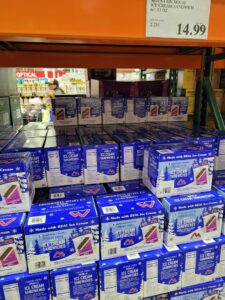 First off, you do not add hot (or cold) water to reconstitute this stuff. You simply eat it as is. I’ve had these before and many people have as well…theyre kind of a novelty in the world of survival food. Does it taste like ice cream? Well, yes. But it gets a bit gummy in your mouth. Still, its pretty cool and a nice treat.
First off, you do not add hot (or cold) water to reconstitute this stuff. You simply eat it as is. I’ve had these before and many people have as well…theyre kind of a novelty in the world of survival food. Does it taste like ice cream? Well, yes. But it gets a bit gummy in your mouth. Still, its pretty cool and a nice treat.
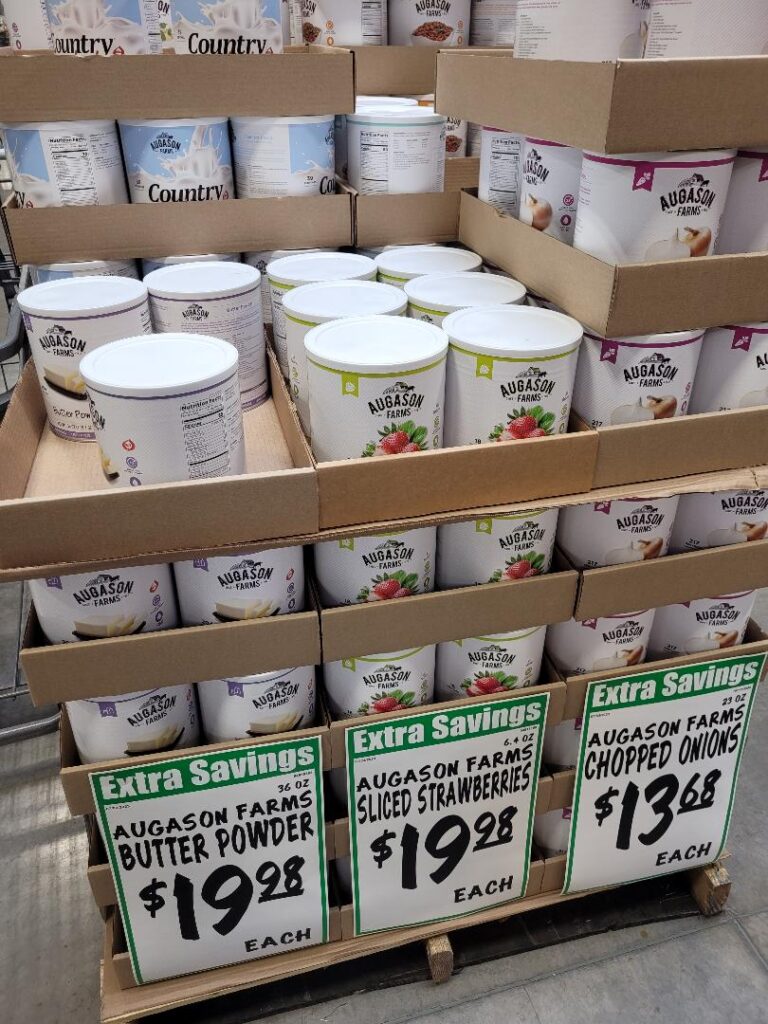
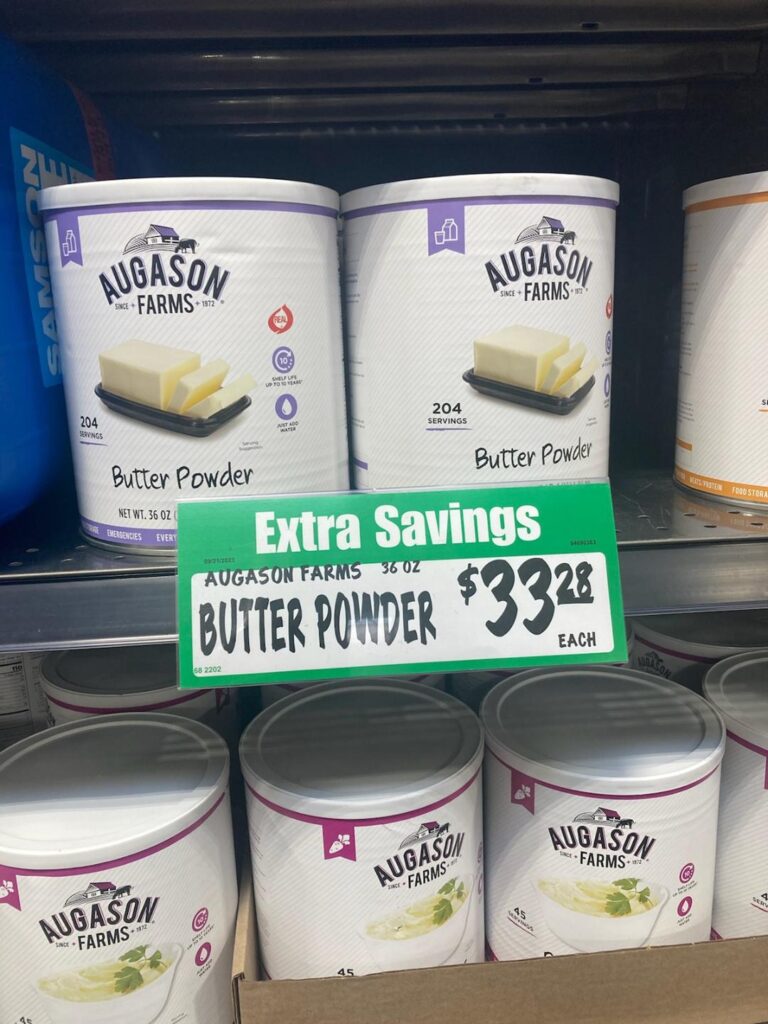
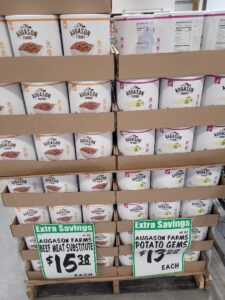
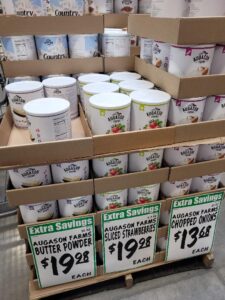
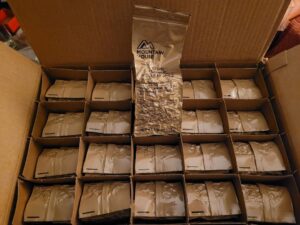 These are slightly more compact than the Pro-Pak series of meals MH offers, and I wanted something for where space is at a premium. Most notably, for when I travel by air and risk
These are slightly more compact than the Pro-Pak series of meals MH offers, and I wanted something for where space is at a premium. Most notably, for when I travel by air and risk 